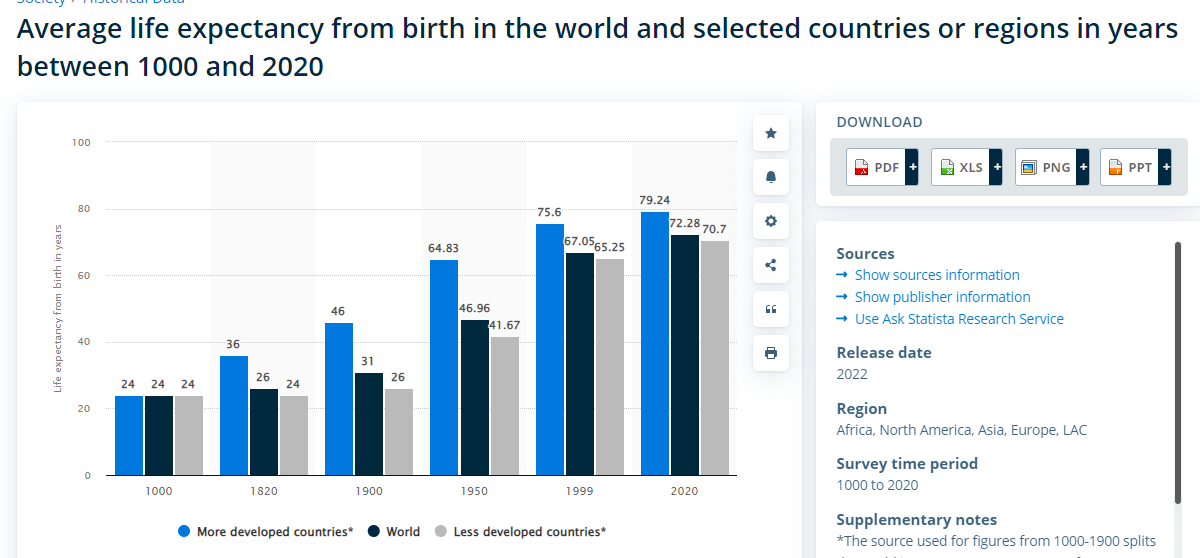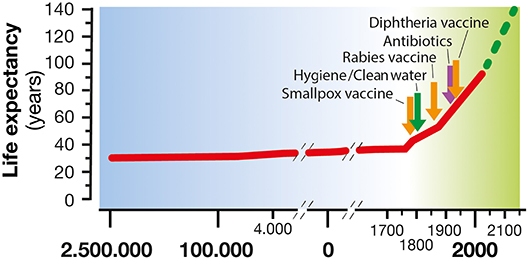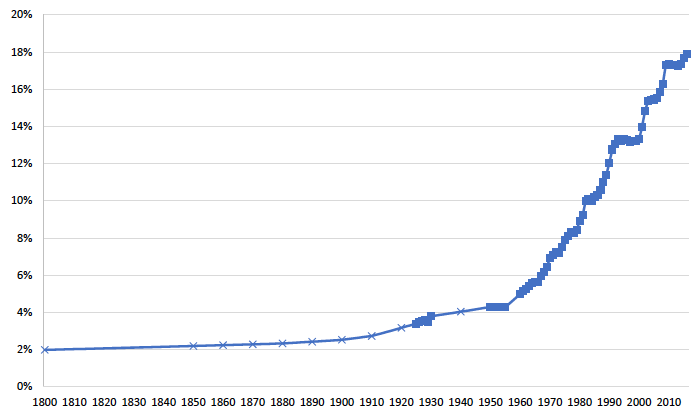Part
01
of two
Part
01
Which factors have the greatest impact on life expectancy?
Key Takeaways
- In China, adequate access to healthcare at age 65, increased life expectancy by about 2 years, in contrast with those lacking access to healthcare. According to a study of the impact of the pandemic on Americans, over 338,500 lives could have been saved, if universal health care was accessible.
- GDP per capita and population size are identified as the most significant factors responsible for variations in life expectancy across continents. Using income per capita and infant mortality rate as variables, a study found that improved population health and socioeconomic development reduced infant mortality rate, and consequently, increased life expectancy at birth.
- According to a study by the Finnish Institute for Health and Welfare, being under heavy stress can reduce life expectancy by 2.8 years. A Yale research proves that a stressful lifestyle can impact health at the DNA level, by making one's life “clock” tick faster.
- Health and longevity are influenced by subjective well-being. According to a study, high levels of subjective well-being is expected to add between 4 and 10 years to life. The result of research suggests that individuals with high levels of subjective well-being live healthier and longer lives than their counterparts.
Introduction
This research brief analyzes factors that have the greatest impact on life expectancy. The factors analyzed include access to healthcare, GDP per capita, stress levels, and self-perceived well-being.
Access to Healthcare
- Health inequity has always been a major problem, with disparities in access and results persisting among and in nations and regions and across gender, financial, and other demographic factors. Typically, without health insurance, access to a primary care doctor is limited, and waiting time at the hospital is longer. This increases the likelihood of suffering from preventable diseases and causes higher mortality rates.
- The United States stands out among rich countries as one where universal health insurance is not accessible to the population. Reduced life expectancy and growth in mortality rate have been attributed to this lack of universal access to healthcare. According to a study that measured the gravity of the impact of the COVID-19 pandemic on Americans, over 338,500 lives could have been saved if universal health care was accessible.
- In China, increased life expectancy among older adults was credited to adequate access to healthcare. Sufficient access to healthcare at age 65 increased life expectancy by about 2 years.
- According to Ann Keller (Associate Professor of Health Policy and Management at U.C. Berkeley), the occurrence of chronic diseases can be prevented with steady access to healthcare. Also, patients with such diseases can have them better managed.”
GDP per Capita
- Life expectancy varies across different continents. Several factors are responsible for this variation, with the most significant being GDP per capita and population size.
- An analysis of the relation between GDP and life expectancy using data from six countries suggests that the mortality rates are often elevated when the GDP of a country is high. Although the relationship is obvious, the impact size is modest. About 1% of adults are more likely to die in a year when the economic performance of a country is about five percent above average.
- Another study, however, reveals that by improving economic development in a country, GDP per capita increases the life expectancy at birth. Socioeconomic development such as economic conditions, the standard of living, health conditions, levels of poverty, and inequality, play an important role in the increase of life expectancy and longevity. The research which analyzed the correlation between socioeconomic development and life expectancy at birth, using income per capita and infant mortality rate as variables for the socioeconomic development in five countries, found that infant mortality rate reduced with improved population health and socioeconomic development; consequently, the life expectancy at birth seemed to increase.
- Generally, life expectancy in a country increases with national income, with some “punching above their weight”, while others “punch lower than their weight” — reaching a higher or lower lifespan than projected by their per capita income. A study of Brazil, Ethiopia, and the United States, identified sociopolitical and economic enhancements, and health care coverage as some possible drivers for extra 2 years of life expectancy in Brazil. While market-based healthcare and considerable rises in income inequality in the United States were some factors responsible for it punching 2.9 years below weight.
Stress Levels
- Although there are no precise reasons for why people with neurotic personalities are more likely to have lower life expectancies, there is proof that neuroticism is associated with high cortisol levels — a hormone that is discharged when someone is stressed. High levels of cortisol have been proven to negatively impact the immune system and heart health. And a state of persistent stress can result in health conditions such as stomach ulcers, high blood pressure, and cardiovascular diseases.
- According to a study by the Finnish Institute for Health and Welfare, life expectancy is not only affected by conventional lifestyle-associated risk factors but also by factors linked to the quality of life, for instance, heavy stress. Life expectancy can be reduced by 2.8 years, in people who are under heavy stress.
- By tracking chemical changes in DNA, scientists can measure biological age — “epigenetic clocks” — which have proven to be better lifespan and health predictors than chronological age. According to Yale researchers, a stressful lifestyle can impact health at the DNA level, by making one's life “clock” tick faster.
- “Many people have had a gut feeling that stress makes us age faster, and our study proves that is true,” stated Zach Harvanek (Resident Psychiatrist and Yale researcher). The Yale study is the first tangible evidence that stress can negatively impact health beyond other physical or mental health conditions.
Self-Perceived Well Being
- Health and longevity are influenced by subjective well-being. Various studies have shown that a lesser subjective age is linked with better cognitive functions, mental and physical health, well-being, and happiness. Loosely described as satisfaction and gratitude for one's life, happiness, happens to be the psychological equivalent of vitamin C. Although not yet fully understood, a positive attitude to life protects against the negative effects of stress and becoming sick. A study of older adults discovered that physical function was better maintained in happier people than those who were unhappy; even walking speeds dropped more slowly.
- Another study connecting happiness to longevity involving a group of nuns, revealed that of the most optimistic quarter of nuns, 90% were alive at age 85, but just 34% of the least cheerful quarter were. The happiest nuns lived 10 years more. According to a Compendium of Factsheets by the Department of Health, high levels of subjective well-being can add between 4 and 10 years to life.
- The length of a perceived healthy life can be estimated using self-rated health as a marker. Studies have revealed that self-perceived health is associated with several health outcomes including morbidity onset, physiological dysregulation, and mortality. An analysis of 9761 participants suggests that individuals with high levels of subjective well-being live healthier and longer lives than their counterparts.
Research Strategy
For this research on which factors have the greatest impact on life expectancy, we leveraged the most reputable sources of information that were available in the public domain, including Scientific American, Our World in Data, Yale University, ScienceDirect, and BioMed Central Ltd.
We have referenced a dated article by the Department of Health because it is an authoritative and credible source of information on the topic. We also didn't identify more recent information that would contradict the data provided by the source.









